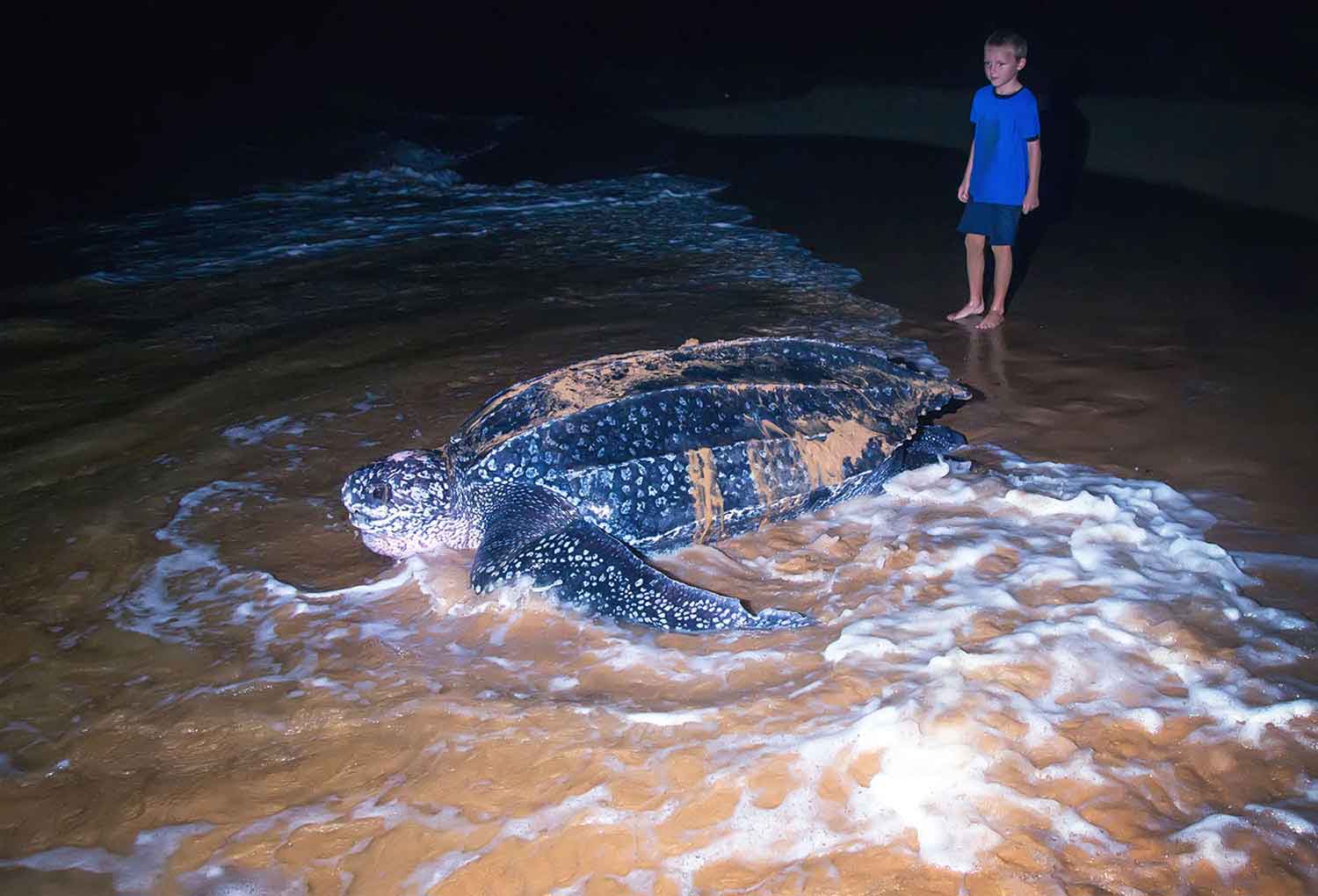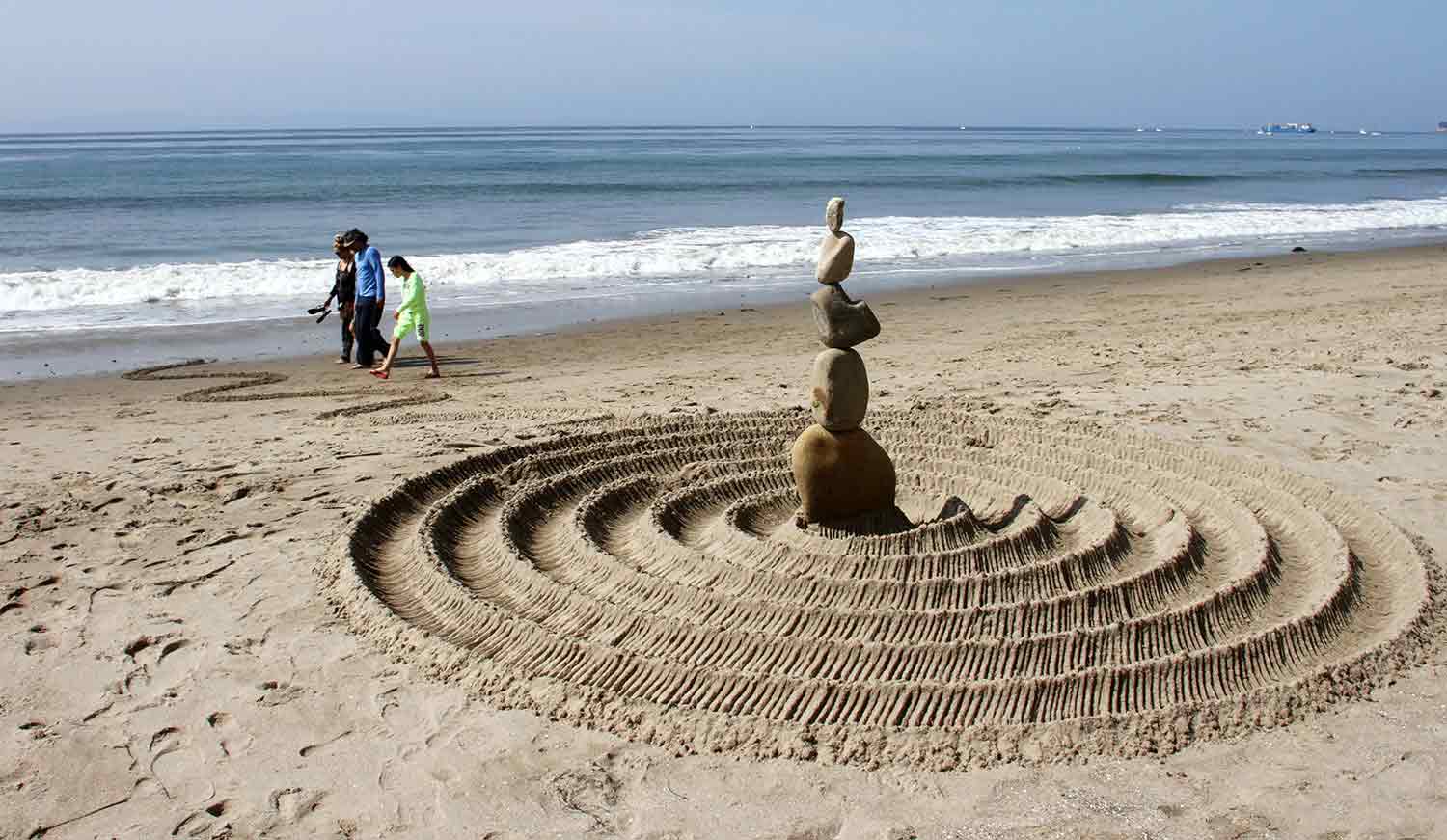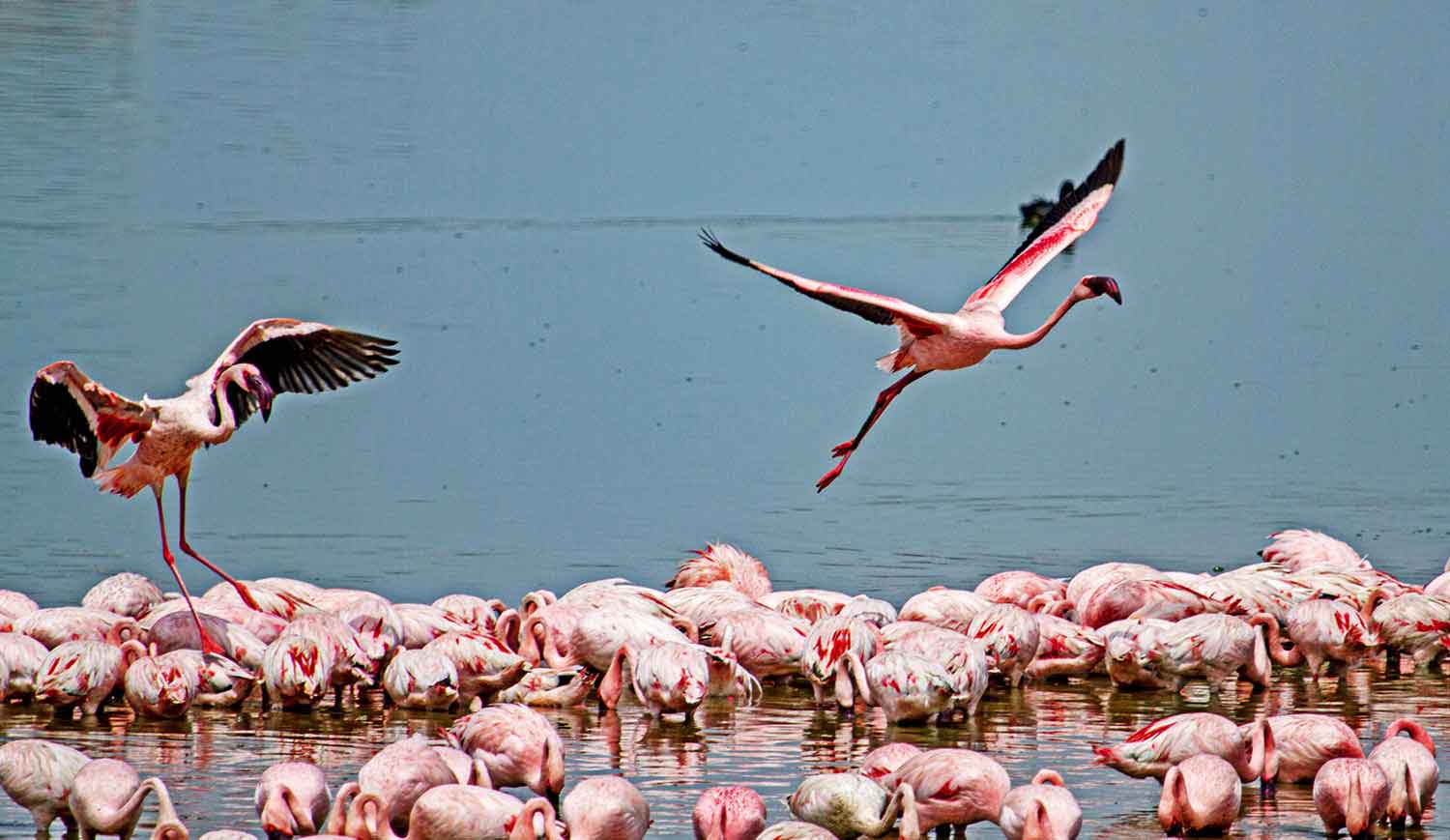Dancing Sea Turtles
Scientists have discovered that loggerhead sea turtles dance when they expect to find food.
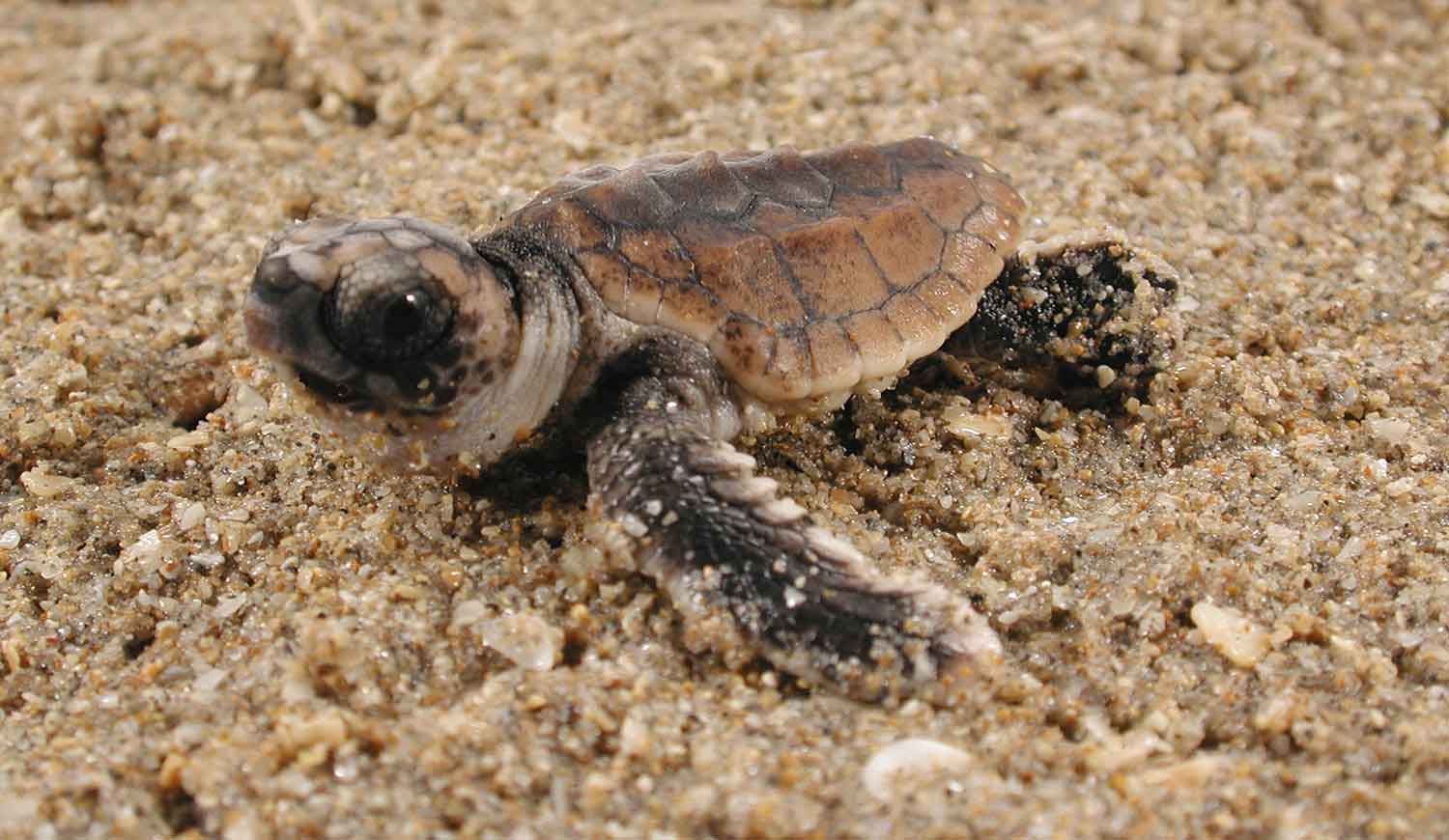
Courtesy of © Ken Lohmann/University of North Carolina-Chapel Hill
A hatchling (baby) loggerhead sea turtle moves across a sandy beach toward the ocean.
If you’re happy and you know it, flap your fins! If it’s mealtime and you know it, flap your fins!
While this isn’t an actual turtle song, scientists have discovered that loggerhead sea turtles do a joyful dance—spinning around and flapping their fins in the water—when they expect to find food. Scientists discovered this cute and unexpected turtle behavior while studying the way young loggerhead sea turtles memorize favorite feeding sites in the wild.
Loggerhead sea turtles begin their lives hatching from eggs buried in the sand and then using their little flippers to run to the ocean. The hatchlings go on to spend their lives in the open ocean, migrating to coastal locations to find food and grow larger. Adult loggerheads are known to migrate hundreds or even thousands of miles for food before making their way back to the beaches where they hatched to mate and lay eggs. After laying eggs, the turtles return to the ocean to find these feeding spots again.
But the open ocean doesn’t have road signs, and sea turtles can’t use GPS or a map to return to their favorite foraging spots. So how do they remember where to go?
Some scientists think that turtles use Earth’s magnetic field to memorize the “magnetic signatures” of these feeding spots. Memorizing these signatures is like marking a favorite restaurant on a map. Scientists think the turtles might have a sense, like an internal compass, that helps them to remember and then return to these feeding sites in the future.
To test this theory, researchers at the University of North Carolina at Chapel Hill (UNC-Chapel Hill) in the United States took 62 young loggerhead turtles and put them in large bowls of water surrounded by electromagnets. The electromagnets could produce different magnetic signatures, like what the turtles would experience swimming to a spot in the ocean. When certain electromagnetic signatures were turned on, the scientists would give the loggerheads food so that they would learn to associate a meal with the signature.
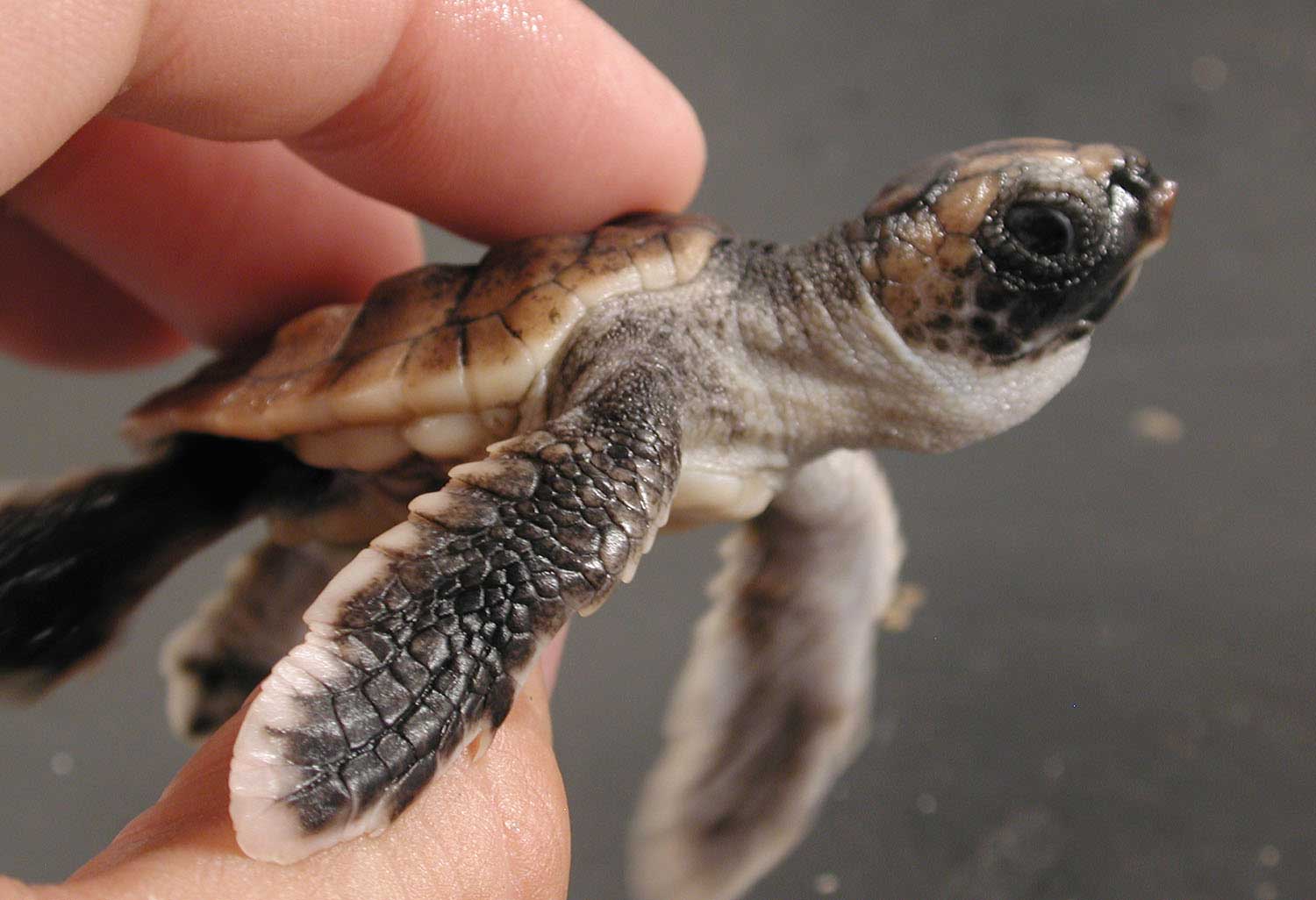
Courtesy of © Ken Lohmann/University of North Carolina-Chapel Hill
A University of North Carolina scientist holds a hatchling sea turtle during research on turtles’ navigation systems.
When the turtles received the food, the scientists witnessed the “turtle dance.”
“When they get really excited, they stick their heads out; they slap their flippers wildly; they spin in place sometimes,” Kayla Goforth, the lead researcher for this study, told UNC Chapel Hill’s news site.
When the scientists turned on the food-related magnetic signatures but withheld the food, the turtles still did a happy turtle dance. The scientists could tell that this joyful dance indicated that the turtles remembered the magnetic signature meant food should come soon. The turtles even remembered—and danced for—the same magnetic signatures months later!
Though the scientists have confirmed that sea turtles have a type of magnetic memory, the creatures remain somewhat mysterious. It is still unknown how these animals sense magnetic signatures.
“The big question is always the mechanism,” Goforth said. “What’s the mechanism and what is the sensor? We know that for the visual sense, you have eyes; for the sense of smell, you have a nose; and for hearing, you have ears. But no receptor like that has been identified for the magnetic sense, and the mechanism remains unknown.”
The video below shows a hatchling turtle dancing when it senses a food-related magnetic signature!
Courtesy of © Ken Lohmann/University of North Carolina-Chapel Hill
